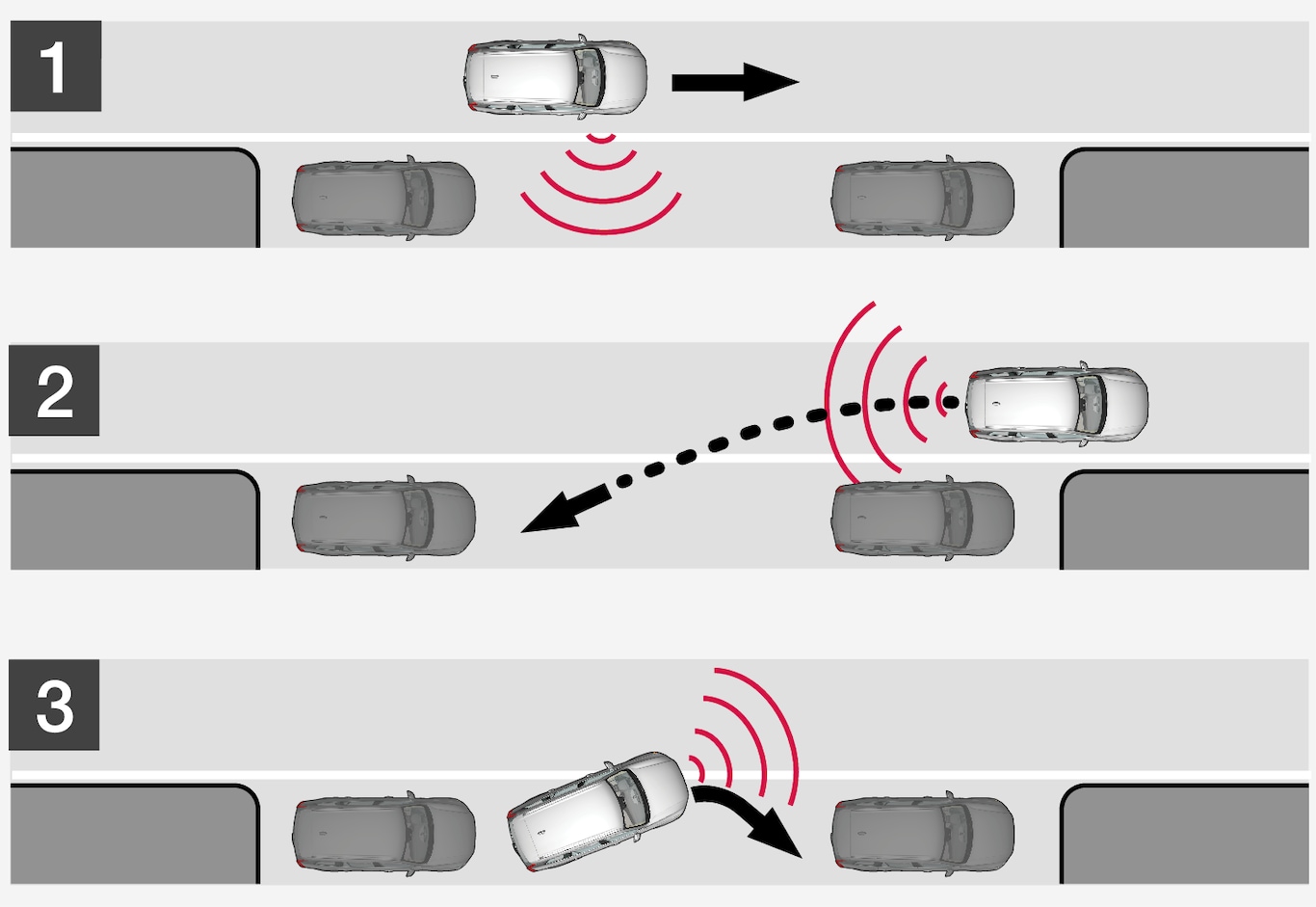PAP checks first if a space is sufficiently big and thereafter helps the driver to turn the steering wheel and manoeuvre the car into the space.
The centre display indicates with symbols, graphics and text the various operations to be carried out and when to do so.
Note
The PAP function measures the space and steers the car - the driver's task is to:
- keep a close watch around the car
- follow the instructions in the centre display
- change gear (reverse/forward)
- control and maintain a safe speed
- brake and stop.
Warning
PAP does not work in all situations but is designed merely as a supplementary aid.
The driver always has the final responsibility for driving the car in a safe manner and for paying attention to the surroundings and other road users approaching or passing while parking.
Types of parking situations
PAP can be used for the following different parking situations.
Parallel parking

- A parking space is identified and measured.
- The car is reversed into the space.
- The car is positioned in the space by means of driving forward/backward.
Using the Park Out function, a parallel-parked car can also be assisted by PAP to leave the parking space - see the heading "Leaving a parking space" in the section "Parking with Active parking assistance".
Perpendicular parking

- A parking space is identified and measured.
- The car is reversed into the space and then positioned in the space by means of driving forward/backward.